HOW & WHAT DOES CHIROPRACTIC HELP WITH?
Dr. Gravely uses hands-on manipulation to remove nerve interference and restore the body to its optimal state of health.He specializes in specific adjustments that are safe and effective for all ages and conditions.
Dr. Gravely has extensive modern training in diversified, specific prone, upper cervical, and extremity adjustments.
Dr. Gravely has extensive modern training in diversified, specific prone, upper cervical, and extremity adjustments.

Chiropractic Care
Spinal health is extremely important to your overall health. The sooner you understand that statement and let it sink in, the better off you’ll be. We’re proud to offer hands-on care to our patients using the most advanced techniques in chiropractic from thermography to soft tissue manipulation. The goal is to relieve pain and ultimately remove any interference to your nervous system. Chiropractic care is an all-natural solution that puts you on the road to recovery and restoration without drugs or surgery.
The spinal cord is a superhighway to your nervous system and since the nervous system controls all the functions of your body, it’s a pretty important job, kind of like a fuse box. What happens when a fuse goes out? Lights go out and power gets interrupted.
It’s no different with your nervous system. When the spine is out of alignment and interferes with the spinal cord, any number of symptoms will occur depending on the location of the problem. Headaches. Stomach issues. Sleeplessness. You name it and it can be affected. Chiropractic care works to fix all that.
Conditions That Can Be Improved With Chiropractic Care:
• Asthma
• Carpal Tunnel
• Lower Back Pain
• Shoulder Pain
• Sleep Apnea
• Fibromyalgia
• Osteoarthritis
• Neck Pain
• Sciatica
• Slipped/Bulging Disc
• Scoliosis
• Headaches/Migraines
• Plantar Fasciitis
We believe that your symptoms are merely a link to the true cause of your pain or condition.
Through regular chiropractic care, we can make a difference in your overall health.
Give us a call and let’s check out what’s going on!
The spinal cord is a superhighway to your nervous system and since the nervous system controls all the functions of your body, it’s a pretty important job, kind of like a fuse box. What happens when a fuse goes out? Lights go out and power gets interrupted.
It’s no different with your nervous system. When the spine is out of alignment and interferes with the spinal cord, any number of symptoms will occur depending on the location of the problem. Headaches. Stomach issues. Sleeplessness. You name it and it can be affected. Chiropractic care works to fix all that.
Conditions That Can Be Improved With Chiropractic Care:
• Asthma
• Carpal Tunnel
• Lower Back Pain
• Shoulder Pain
• Sleep Apnea
• Fibromyalgia
• Osteoarthritis
• Neck Pain
• Sciatica
• Slipped/Bulging Disc
• Scoliosis
• Headaches/Migraines
• Plantar Fasciitis
We believe that your symptoms are merely a link to the true cause of your pain or condition.
Through regular chiropractic care, we can make a difference in your overall health.
Give us a call and let’s check out what’s going on!

Back Pain
Most neck and upper back pain is caused by a combination of factors, including injury, poor posture, chiropractic subluxations, stress, and in some instances, disc problems.
Most people do not realize how much they move their neck during the day until they are unable to do so. The degree of flexibility of the neck, coupled with the fact that it has the least amount of muscular stabilization and it has to support and move your 14 – 16 pound head, means that the neck is very susceptible to injury.
You can picture your neck and head much like a bowling ball being held on top of a stick by small, thin, elastic bands. It doesn’t take much force to disrupt that delicate balance.
The spinal cord runs through a space in the vertebrae to send nerve impulses to every part of the body. Between each pair of cervical vertebrae, the spinal cord sends off large bundles of nerves that run down the arms and to some degree, the upper back. This means that if your arm is hurting, it may actually be a problem in the neck! Symptoms in the arms can include numbness, tingling, cold, aching, and “pins and needles”.
These symptoms can be confused with carpal tunnel syndrome, a painful condition in the hands that is often found in people who work at computer keyboards or perform other repetitive motion tasks for extended periods.
Problems in the neck can also contribute to headaches, muscle spasms in the shoulders and upper back, ringing in the ears, otitis media (inflammation in the middle ear, often mistaken for an ear infection in children), temporomandibular joint dysfunction (TMJ), restricted range of motion and chronic tightness in the neck and upper back.
We associate the neck and upper back together, because most of the muscles that are associated with the neck either attach to, or are located in, the upper back. These muscles include the trapezius, the levator scapulae, the cervical paraspinal muscles and the scalenes, as well as others.
Injuries
By far, the most common injury to the neck is a whiplash injury. Whiplash is caused by a sudden movement of the head, either backward, forward, or sideways, that results in the damage to the supporting muscles, ligaments and other connective tissues in the neck and upper back. Whether from a car accident, sports, or an accident at work, whiplash injuries need to be taken very seriously. Because symptoms of a whiplash injury can take weeks or months to manifest, it is easy to be fooled into thinking that you are not as injured as you really are. Too often people don’t seek treatment following a car accident or sports injury because they don’t feel hurt. Unfortunately, by the time more serious complications develop, some of the damage from the injury may have become permanent. Numerous studies have shown that years after whiplash victims settle their insurance claims, roughly half of them state that they still suffer with symptoms from their injuries. If you have been in a motor vehicle or any other kind of accident, don’t assume that you escaped injury if you are not currently in pain. Get checked out by a good chiropractor.
Forward head posture is very common for people who are stooped over their computers all day long. If not taken care of with chiropractic care, subluxations like this can worsen over time.
Poor Posture
One of the most common causes of neck pain, and sometimes headaches, is poor posture. It’s easy to get into bad posture habits without even realizing it – even an activity as “innocent” as reading in bed can ultimately lead to pain, headaches, and more serious problems. The basic rule is simple: keep your neck in a “neutral” position whenever possible. Don’t bend or hunch your neck forward for long periods. Also, try not to sit in one position for a long time. If you must sit for an extended period, make sure your posture is good: Keep your head in a neutral position, make sure your back is supported, keep your knees slightly lower than your hips, and rest your arms if possible.
Subluxations
Subluxations in the neck and upper back area are extremely common due to the high degree of stress associated with holding up your head, coupled with the high degree of instability in the cervical spine. Most subluxations tend to be centered around four areas: the top of the cervical spine where it meets the skull; in the middle of the cervical spine where the mechanical stress from the head is the greatest; in the transition where the cervical and thoracic areas of the spine meet; and in the middle of the thoracic spine where the mechanical stress from the weight of the upper body is greatest. Signs of subluxation include looking in the mirror and seeing your head tilted or one shoulder higher than the other. Often women will notice that their sleeve length is different or that a necklace is hanging off center. If someone looks at you from the side they may notice that your head sits forward from your shoulders. This is known as FHP – forward head posture – and is very common for people who are stooped over their computers all day long. Subluxations are a debt to the body. If they are not taken care of soon after they occur, then they can get much worse over time due to the accumulation of compounding interest.
Stress
When most people become stressed, they unconsciously contract their muscles. In particular, the muscles in their back. This ‘muscle guarding’ is a survival response designed to guard against injury. In today’s world where we are not exposed to physical danger most of the time, muscle guarding still occurs whenever we become emotionally stressed. The areas most affected are the muscles of the neck, upper back and low back. For most of us, the particular muscle affected by stress is the trapezius muscle, where daily stress usually leads to chronic tightness and the development of trigger points.The two most effective ways you can reduce the physical effects of stress on your own are to increase your activity level – exercise – and by deep breathing exercises. When you decrease the physical effects of stress, you can substantially reduce the amount of tightness and pain in your upper back and neck.
Disc Herniations
The discs in your cervical spine can herniate or bulge and put pressure on the nerves that exit from the spine through that area. Although cervical discs do not herniate nearly as often as lumbar discs do, they occasionally can herniate, especially when the discs sustain damage from a whiplash injury. Contact us today!
Most people do not realize how much they move their neck during the day until they are unable to do so. The degree of flexibility of the neck, coupled with the fact that it has the least amount of muscular stabilization and it has to support and move your 14 – 16 pound head, means that the neck is very susceptible to injury.
You can picture your neck and head much like a bowling ball being held on top of a stick by small, thin, elastic bands. It doesn’t take much force to disrupt that delicate balance.
The spinal cord runs through a space in the vertebrae to send nerve impulses to every part of the body. Between each pair of cervical vertebrae, the spinal cord sends off large bundles of nerves that run down the arms and to some degree, the upper back. This means that if your arm is hurting, it may actually be a problem in the neck! Symptoms in the arms can include numbness, tingling, cold, aching, and “pins and needles”.
These symptoms can be confused with carpal tunnel syndrome, a painful condition in the hands that is often found in people who work at computer keyboards or perform other repetitive motion tasks for extended periods.
Problems in the neck can also contribute to headaches, muscle spasms in the shoulders and upper back, ringing in the ears, otitis media (inflammation in the middle ear, often mistaken for an ear infection in children), temporomandibular joint dysfunction (TMJ), restricted range of motion and chronic tightness in the neck and upper back.
We associate the neck and upper back together, because most of the muscles that are associated with the neck either attach to, or are located in, the upper back. These muscles include the trapezius, the levator scapulae, the cervical paraspinal muscles and the scalenes, as well as others.
Injuries
By far, the most common injury to the neck is a whiplash injury. Whiplash is caused by a sudden movement of the head, either backward, forward, or sideways, that results in the damage to the supporting muscles, ligaments and other connective tissues in the neck and upper back. Whether from a car accident, sports, or an accident at work, whiplash injuries need to be taken very seriously. Because symptoms of a whiplash injury can take weeks or months to manifest, it is easy to be fooled into thinking that you are not as injured as you really are. Too often people don’t seek treatment following a car accident or sports injury because they don’t feel hurt. Unfortunately, by the time more serious complications develop, some of the damage from the injury may have become permanent. Numerous studies have shown that years after whiplash victims settle their insurance claims, roughly half of them state that they still suffer with symptoms from their injuries. If you have been in a motor vehicle or any other kind of accident, don’t assume that you escaped injury if you are not currently in pain. Get checked out by a good chiropractor.
Forward head posture is very common for people who are stooped over their computers all day long. If not taken care of with chiropractic care, subluxations like this can worsen over time.
Poor Posture
One of the most common causes of neck pain, and sometimes headaches, is poor posture. It’s easy to get into bad posture habits without even realizing it – even an activity as “innocent” as reading in bed can ultimately lead to pain, headaches, and more serious problems. The basic rule is simple: keep your neck in a “neutral” position whenever possible. Don’t bend or hunch your neck forward for long periods. Also, try not to sit in one position for a long time. If you must sit for an extended period, make sure your posture is good: Keep your head in a neutral position, make sure your back is supported, keep your knees slightly lower than your hips, and rest your arms if possible.
Subluxations
Subluxations in the neck and upper back area are extremely common due to the high degree of stress associated with holding up your head, coupled with the high degree of instability in the cervical spine. Most subluxations tend to be centered around four areas: the top of the cervical spine where it meets the skull; in the middle of the cervical spine where the mechanical stress from the head is the greatest; in the transition where the cervical and thoracic areas of the spine meet; and in the middle of the thoracic spine where the mechanical stress from the weight of the upper body is greatest. Signs of subluxation include looking in the mirror and seeing your head tilted or one shoulder higher than the other. Often women will notice that their sleeve length is different or that a necklace is hanging off center. If someone looks at you from the side they may notice that your head sits forward from your shoulders. This is known as FHP – forward head posture – and is very common for people who are stooped over their computers all day long. Subluxations are a debt to the body. If they are not taken care of soon after they occur, then they can get much worse over time due to the accumulation of compounding interest.
Stress
When most people become stressed, they unconsciously contract their muscles. In particular, the muscles in their back. This ‘muscle guarding’ is a survival response designed to guard against injury. In today’s world where we are not exposed to physical danger most of the time, muscle guarding still occurs whenever we become emotionally stressed. The areas most affected are the muscles of the neck, upper back and low back. For most of us, the particular muscle affected by stress is the trapezius muscle, where daily stress usually leads to chronic tightness and the development of trigger points.The two most effective ways you can reduce the physical effects of stress on your own are to increase your activity level – exercise – and by deep breathing exercises. When you decrease the physical effects of stress, you can substantially reduce the amount of tightness and pain in your upper back and neck.
Disc Herniations
The discs in your cervical spine can herniate or bulge and put pressure on the nerves that exit from the spine through that area. Although cervical discs do not herniate nearly as often as lumbar discs do, they occasionally can herniate, especially when the discs sustain damage from a whiplash injury. Contact us today!

Headaches and Migraines
Some estimates suggest that 25 percent of the population has a headache right now. Because headaches are so common, most people think it is a normal part of life. Headaches, however, are a sign that something is wrong. We know that stress, toxic fumes, certain foods and preservatives and even alcohol can cause headaches. A frequent and overlooked cause of headaches is the malfunction of spinal bones in the neck and upper back. When the bones of the spine lose their normal position or motion, the sensitive nerves and blood vessels to the head become compromised. When these delicate tissues are stretched or irritated, they can produce certain types of headaches. While aspirin or other medications may cover up the symptoms, they do not really correct the cause of the headache. A report released in 2001 by researchers at the Duke University Evidence-Based Practice Center in Durham, NC, found that chiropractic adjustments resulted in almost immediate improvement for those headaches that originate in the neck, and had significantly fewer side effects and longer-lasting relief of tension-type headache than a commonly prescribed medication.

I Get Headaches All The Time… Can Regular Chiropractic Adjustments Help?
Many people suffer from chronic headaches. Some headaches can be attributed to stress or tension, but the latest medical literature1 reports that some cases of chronic headache are caused by a problem in the neck—and that they are often misdiagnosed or unrecognized by physicians. Chiropractic for headache.
These headaches are known as “cervicogenic headaches,” since they have their “genesis” in the cervical spine. They arise when the nerves, joints, or muscles of the neck are injured or strained. Pain signals from the neck can get mixed with nerve pathways of the head and face, and can create pain in seemingly unrelated parts of the body.
Cervical spine dysfunction can cause pain in any part of the head, and cervicogenic headaches are usually focused on one side. These types of headaches can last for many hours or days, and are usually described as a dull, aching pain. Neck movement, injuries, or an awkward posture can trigger these headaches. Medication may relieve pain temporarily, but if the root cause of the pain is not eliminated, the symptoms will just return down the road. The first step in treating headache is to take a careful history and perform a thorough physical exam. This will help us determine the precise source of your pain, and help us design an effective treatment plan. Chiropractic can be a great way to treat headaches, since we work specifically with the spine to make sure that it is functioning properly. If you suffer from regular headaches, contact our office for an appointment. Biondi DM. Cervicogenic headache: a review of diagnostic and treatment strategies. JAOA 2005;Supplement 2;105(4):S16-S22.
These headaches are known as “cervicogenic headaches,” since they have their “genesis” in the cervical spine. They arise when the nerves, joints, or muscles of the neck are injured or strained. Pain signals from the neck can get mixed with nerve pathways of the head and face, and can create pain in seemingly unrelated parts of the body.
Cervical spine dysfunction can cause pain in any part of the head, and cervicogenic headaches are usually focused on one side. These types of headaches can last for many hours or days, and are usually described as a dull, aching pain. Neck movement, injuries, or an awkward posture can trigger these headaches. Medication may relieve pain temporarily, but if the root cause of the pain is not eliminated, the symptoms will just return down the road. The first step in treating headache is to take a careful history and perform a thorough physical exam. This will help us determine the precise source of your pain, and help us design an effective treatment plan. Chiropractic can be a great way to treat headaches, since we work specifically with the spine to make sure that it is functioning properly. If you suffer from regular headaches, contact our office for an appointment. Biondi DM. Cervicogenic headache: a review of diagnostic and treatment strategies. JAOA 2005;Supplement 2;105(4):S16-S22.

Is There A Chiropractic Treatment For Tension Headaches?
Tension headaches are the most common type of headache accounting for 90% of all headaches. The pain from a tension headache is constant and it can be diffusely spread throughout one or more areas in the head. You may have pain in your neck and upper back from sore muscles or even dizziness from a tension headache. The most common causes of tension headaches are anxiety, stress, depression and anger as well as food allergies, poor posture, and improper breathing. Though common OTC pain relievers such as aspirin, ibuprofen or acetaminophen can mask the pain from a tension headache, they carry unwanted side effects if you reach for that bottle too often. Stomach problems and liver damage can occur if OTC pain relievers are used too often. More importantly, treating a tension headache with a pain reliever is much like sticking your finger in the hole in the dam rather than fixing the hole. Tension headaches occur mainly because of stress and poor posture that fatigues and strains the muscles that support your head. If you are unable to relieve these two tension headache-producing factors, you will continue to suffer from tension headaches. Massage can reduce stress and soothe sore muscles. A pilot study printed in the Journal of Manual and Manipulative Therapy suggest a decrease in both primary and secondary headache pain measures with two 45 minute weekly massage sessions in patients with chronic tension-type headaches.1 The patients reported less intensity and frequency of headaches after undergoing the massage that focused on myofascial trigger points. If you’re tired of taking pain medicine for your tension headaches and are looking for a real solution, please call a licensed massage therapist today. 1. Moraska A, Chandler C. Changes in Clinical Parameters in Patients with Tension-type Headache Following Massage Therapy: A Pilot Study. J Man Manip Ther. 2008;16(2):106-12.
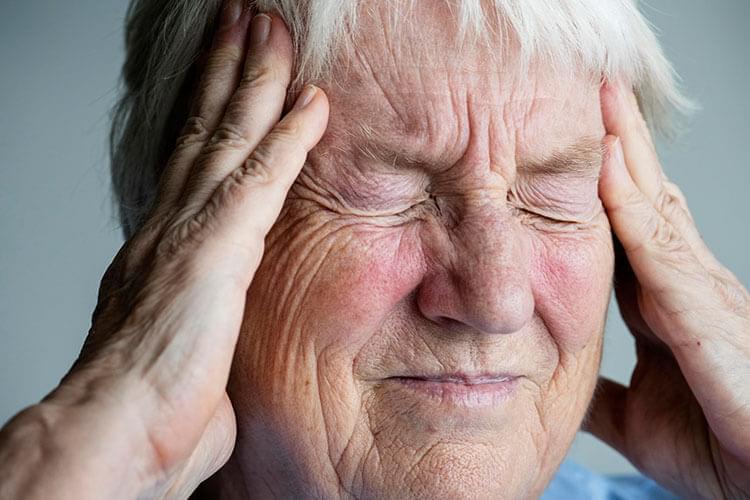
Can Chiropractic Treatment Help Relieve My Migraines?
Migraine headaches are estimated to cost the U.S. over $17 billion each year. While it is clinically recognized that migraines can be related to cervicogenic conditions, the exact nature of this relationship is unknown. This study set out to test the effectiveness of chiropractic treatment for migraines. 123 participants diagnosed with migraines according to the International Headache Society standard completed the study. Each participant experienced a minimum of 1 migraine per month, and had at least 5 of the following indicators: inability to maintain normal activities/need to seek dark and quiet, pain located around the temples, “throbbing” pain, symptoms of nausea, vomiting, aura, photophobia or phonophobia, migraine triggered by weather changes, migraine worsened by head or neck movement, diagnosis of migraine by a specialist, and a family history of migraine. The study consisted of three stages. In the pretreatment stage, researchers collected data on migraine incidence, intensity, duration, disability and use of medications, this data was used as a baseline to compare with study results and data collection continued throughout the trial. For the second stage of research participants were split into a control group (40) that received a placebo treatment using electrodes and an experimental group (83) that received a maximum of 16 treatments of chiropractic spinal manipulative therapy (CSMT). The last 2 months of the study involved data collection for comparison purposes. Results showed that those that received chiropractic treatment had significant improvement in migraine frequency, duration, disability and lowered medication use in comparison to the control group. Improvements in migraine frequency and duration for the chiropractic group are illustrated below. The area of greatest improvement was medication use, with a significant number of participants reporting that their medication use was down to zero by the end of the trial. Five participants reported that migraine symptoms were worse after 2 months of CSMT, but they did not report intensified symptoms at the post treatment stage. The authors report that their study with a 6-month duration is more valid than some previous studies because studies with shorter durations are too short to allow for the cyclical nature of migraines. Limited sample size and lack of consideration for what aspect of CSMT caused the improvements are some limitations of this study. Researchers also suggest that an improved study method might be to treat the control group with a sham form of CSMT rather than a treatment that does not mimic chiropractic. Despite some limitations this research adds to the body of evidence that suggests chiropractic manipulative therapy can be an effective treatment for migraine and headaches. The authors conclude: “A high percentage (83%) of participants in this study reported stress as a major factor for their migraines. It appears probable that chiropractic care has an effect on the physical conditions related to stress and that in these people the effects of the migraine are reduced. However, further studies are required to assess how chiropractic SMT may have an effect on migraine morbidity.” Tuchin PJ, Pollard H, Bonello R. A randomized controlled trial of chiropractic spinal manipulative therapy for migraine. Journal of Manipulative and Physiological Therapeutics 2000;23(2):91-95.

What Is The Correlation Between Spinal Manipulation And Headache Relief?
Headaches are a common complaint that can be caused by a range of factors. Those that can be traced to disorders in the neck are called cervicogenic headaches, and this type of headache may affect as many as 20 percent1 of patients experiencing chronic head pain. Although their symptoms are similar to those of tension headaches and migraines, cervicogenic headaches are often a result of injury or other trauma. Because cervicogenic headaches often restrict a patient’s range of motion, this condition can seriously impact physical abilities and overall quality of life. New research published in Chiropractic & Osteopathy supports the case for using chiropractic spinal manipulation to treat cervicogenic headaches. A team of researchers from the University of Pittsburgh and the University of Western States in Portland, Oregon, compared the effects of spinal manipulation treatment to light massage on a group of 80 patients suffering from cervicogenic headache. They found that over a 12-week period, 42% of study participants who received spinal manipulation treatment reported significant pain reduction compared to just 23% of those who received massage. During that same period, the chiropractic group experienced a greater reduction in the number of headaches (64% versus 46%) and reported that pain interfered less with their daily activities. After 24 weeks, patients in the chiropractic group continued to experience greater benefit from their treatment, with 56% reporting that their head pain was less disabling compared to 38% improvement among the control group. Over three-quarters of participants who received spinal manipulation treatment noted some reduction in the number of headaches during the course of the study. The study’s authors conclude that, “Spinal manipulation had a clinically important advantage over light massage in headache pain, number, and disability.” Their research shows that chiropractic treatment can have substantial and lasting benefits for a significant percentage of people suffering from cervicogenic headaches. Haas M, Schneider M, Vavrek D. Illustrating risk difference and number needed to treat from a randomized controlled trial of spinal manipulation for cervicogenic headache. Chiropractic & Osteopathy 2010; 18:9
[1] Haldeman S, Dagenais S. Cervicogenic headaches: a critical review. Spine J.2001; 1(1):31 -46.

Auto Injury
If you’ve been injured in an auto accident, give us a call today to schedule a consultation.
Common symptoms Chiropractic may help with:
✓ Whiplash
✓ Headaches
✓ Neck Pain
Common symptoms Chiropractic may help with:
✓ Whiplash
✓ Headaches
✓ Neck Pain
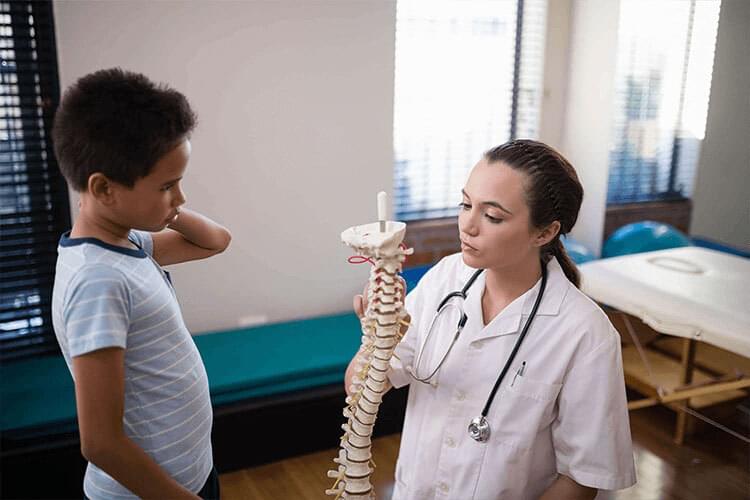
Pediatrics
The Chiropractic care that we provide is an effective and affordable program that addresses children’s health conditions associated with the nervous and musculoskeletal systems.
Gentle, noninvasive and drug-free, chiropractic adjustments help and prevent a wide range of health problems.
Recent research by the International Chiropractic Pediatric Association (ICPA) found spinal therapy safe and successful in caring for children of all ages.
Chiropractic care for children can help with the following:
✓ Acid Reflux
✓ ADHA
✓ Allergies / Sinus Issues
✓ Asthma
✓ Bed Wetting
✓ Colic
✓ Ear Aches
✓ Scoliosis
Gentle, noninvasive and drug-free, chiropractic adjustments help and prevent a wide range of health problems.
Recent research by the International Chiropractic Pediatric Association (ICPA) found spinal therapy safe and successful in caring for children of all ages.
Chiropractic care for children can help with the following:
✓ Acid Reflux
✓ ADHA
✓ Allergies / Sinus Issues
✓ Asthma
✓ Bed Wetting
✓ Colic
✓ Ear Aches
✓ Scoliosis

Pregnancy
Dr. Gravely has extensive training in prenatal care.
✓ Back Pain
✓ Heartburn
✓ Sciatica
✓ Sleep Problems
✓ Back Pain
✓ Heartburn
✓ Sciatica
✓ Sleep Problems

Sciatica
Sciatica, which is also known as sciatic neuralgia, is a condition that causes pain in the lower back, down the back of the leg, and into the foot. It can make sitting and standing for long periods of time difficult and can lead to weakness, tingling, and numbness in the leg and foot.
It will often come and go throughout a person’s lifetime, causing periods of varying degrees of pain and discomfort. If left unchecked, sciatic pain will generally grow worse and the nerve can become permanently injured.
The reason why the pain travels so far, seems to radiate up and down the legs and back, is because it is caused by the compression of the sciatic nerve, the longest nerve in the body.
This nerve originates in the lumbar spine and extends into the buttocks before traveling down the leg to the ankle and foot. When the vertebrae in the low back are compressed, the roots of the sciatic nerve can become pinched and irritated which is what causes the pain and injury.
HOW DO YOU DEVELOP SCIATICA?
There are a number of factors that can lead to sciatica. It is most commonly caused by disc injuries and bulges. In this occurrence, the disc presses against the nerve root causing the issue. Disc Injuries can occur because of poor posture, repetitive use injuries, and accidents. Sciatica is also common when there are subluxations (misalignments) in the spine due to postural issues, pregnancy, or trauma. Some patients say they simply bent over to pick up a piece of paper and they were hit with extreme pain. The reality is that the spinal condition was probably developing for quite some time before the triggering incident occurred.
CHIROPRACTIC CARE FOR SCIATICA
Chiropractors are highly trained to zero in on the source of the sciatica and to work with the patient in determining the most suitable approach to treatment. After a thorough assessment of the individual’s unique issue, gentle adjustments are made that will allow the body to recover its natural alignment.
Some people respond very quickly while others take more time to recover. It really depends on the condition of the disc or the joints that the chiropractor has to correct. In most cases, the longer the issue persists, the longer it will take to achieve correction. The great news is that it typically takes less time to fix an issue like this than it took to create it. Once the position of the spine and discs are improved, patients often report improvements to their overall health. If you are experiencing symptoms of sciatica call our team at Two Hands Chiropractic today.
It will often come and go throughout a person’s lifetime, causing periods of varying degrees of pain and discomfort. If left unchecked, sciatic pain will generally grow worse and the nerve can become permanently injured.
The reason why the pain travels so far, seems to radiate up and down the legs and back, is because it is caused by the compression of the sciatic nerve, the longest nerve in the body.
This nerve originates in the lumbar spine and extends into the buttocks before traveling down the leg to the ankle and foot. When the vertebrae in the low back are compressed, the roots of the sciatic nerve can become pinched and irritated which is what causes the pain and injury.
HOW DO YOU DEVELOP SCIATICA?
There are a number of factors that can lead to sciatica. It is most commonly caused by disc injuries and bulges. In this occurrence, the disc presses against the nerve root causing the issue. Disc Injuries can occur because of poor posture, repetitive use injuries, and accidents. Sciatica is also common when there are subluxations (misalignments) in the spine due to postural issues, pregnancy, or trauma. Some patients say they simply bent over to pick up a piece of paper and they were hit with extreme pain. The reality is that the spinal condition was probably developing for quite some time before the triggering incident occurred.
CHIROPRACTIC CARE FOR SCIATICA
Chiropractors are highly trained to zero in on the source of the sciatica and to work with the patient in determining the most suitable approach to treatment. After a thorough assessment of the individual’s unique issue, gentle adjustments are made that will allow the body to recover its natural alignment.
Some people respond very quickly while others take more time to recover. It really depends on the condition of the disc or the joints that the chiropractor has to correct. In most cases, the longer the issue persists, the longer it will take to achieve correction. The great news is that it typically takes less time to fix an issue like this than it took to create it. Once the position of the spine and discs are improved, patients often report improvements to their overall health. If you are experiencing symptoms of sciatica call our team at Two Hands Chiropractic today.

Corporate Wellness
Corporate Wellness Programs are an investment in your company’s most important resource, your employees. Studies have shown that employees are more likely to be on the job and performing well when they are feeling good both physically and mentally.Employees are also more likely to be attracted to, remain with, and appreciate an employer that values them. The benefits that you will potentially see are the following:
✓ Attracting superior quality staff
✓ Improving employee morale
✓ Increasing productivity
✓ Decreasing healthcare costs
✓ Strengthening corporate culture
✓ Providing proven solutions & results
✓ Decreasing turnover
✓ Reducing absenteeism and time lost
✓ Attracting superior quality staff
✓ Improving employee morale
✓ Increasing productivity
✓ Decreasing healthcare costs
✓ Strengthening corporate culture
✓ Providing proven solutions & results
✓ Decreasing turnover
✓ Reducing absenteeism and time lost

Wellness Care
When visiting our practice, we take the chiropractic lifestyle to a level where it becomes REAL for you.
Not only do we offer the adjustment, but we combine these programs with tips on fitness, nutrition and stress relief.
We take into account your entire body and the lifestyle choices that you make when developing customized protocols for you to follow.
With this being said, please contact our office today so that we can schedule a health consultation with you!
Not only do we offer the adjustment, but we combine these programs with tips on fitness, nutrition and stress relief.
We take into account your entire body and the lifestyle choices that you make when developing customized protocols for you to follow.
With this being said, please contact our office today so that we can schedule a health consultation with you!
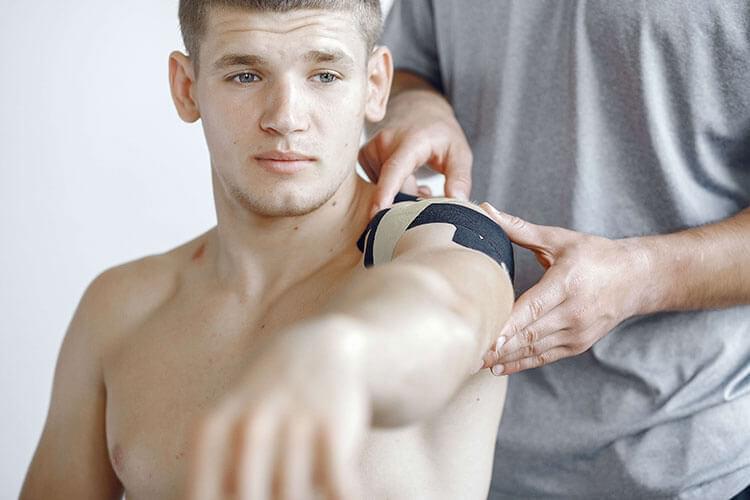
Sports Chiropractic
Sports may seem like one of the most simple and easiest activities that human can do. However, it is important to maintain a healthy spine for athleticism.Many people don’t know that chiropractic care is important for athletes because back pain can lead to decreased performance in sports.
Chiropractic care will help decrease pain, improve mobility, and protect from injury.
Chiropractic care will help decrease pain, improve mobility, and protect from injury.

Disc Disorder
If you are experiencing back pain, then there is a chance that you may have something called a disc disorder. The vertebrae in the back are separated by small discs.These discs are designed to prevent the vertebrae from rubbing against one another. If you are suffering from disc disorders, then you should be familiar with some of the most common causes. Then, read more about how a chiropractor can help you.
These discs are designed to prevent the vertebrae from rubbing against one another. If you are suffering from disc disorders, then you should be familiar with some of the most common causes. Then, read more about how a chiropractor can help you.
These discs are designed to prevent the vertebrae from rubbing against one another. If you are suffering from disc disorders, then you should be familiar with some of the most common causes. Then, read more about how a chiropractor can help you.
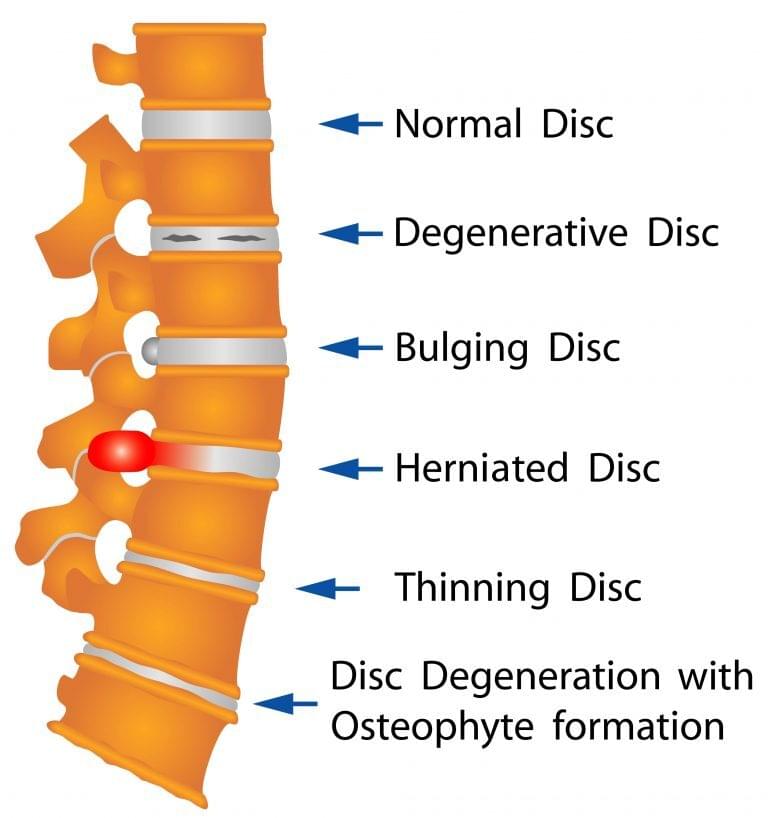
What Are The Most Common Causes of Disc Disorders?
There are two broad categories of disc disorder causes. The first is an acute cause. In this case, people develop a disc disorder because they are involved in a traumatic accident, suffer a sports injury, or are involved in a car crash. Acute injuries can lead to disc issues involving the back, leading to back pain.
In other cases, people develop disc disorders because of chronic, gradual issues. For example, some people may have a genetic condition that predisposes them to develop disc issues. In other cases, people may have a condition, such as arthritis, that may damage the discs gradually, over time. There are multiple types of disc issues that someone might suffer.
A Herniated Disc Can Lead To Back Pain
One of the most common examples is a herniated disc. Also called a slipped disc, this takes place when one of the discs in between the vertebrae ends up rupturing. As a result, the liquid material inside of the disc begins to leak down the spine itself. This can irritate the nerves, leading to shooting pains that travel down the arms or legs.
Furthermore, a slipped disc can also cause two vertebrae to collapse on top of one another, leading to irritation and compression. Even though some people believe they need surgery, this is not always the case.
A Bulging Disc Must Be Addressed
A bulging disk is similar to a herniated disc. A bulging disc simply hasn’t ruptured yet. On the other hand, a bulging disc can still expand and irritate the nerves of the spine, leading to back or leg pain. If this issue is addressed quickly, it might be possible to prevent the disc from herniating. Therefore, the recovery process might be faster. It is important to work with a trained back specialist, such as a chiropractor, to address this issue.
In other cases, people develop disc disorders because of chronic, gradual issues. For example, some people may have a genetic condition that predisposes them to develop disc issues. In other cases, people may have a condition, such as arthritis, that may damage the discs gradually, over time. There are multiple types of disc issues that someone might suffer.
A Herniated Disc Can Lead To Back Pain
One of the most common examples is a herniated disc. Also called a slipped disc, this takes place when one of the discs in between the vertebrae ends up rupturing. As a result, the liquid material inside of the disc begins to leak down the spine itself. This can irritate the nerves, leading to shooting pains that travel down the arms or legs.
Furthermore, a slipped disc can also cause two vertebrae to collapse on top of one another, leading to irritation and compression. Even though some people believe they need surgery, this is not always the case.
A Bulging Disc Must Be Addressed
A bulging disk is similar to a herniated disc. A bulging disc simply hasn’t ruptured yet. On the other hand, a bulging disc can still expand and irritate the nerves of the spine, leading to back or leg pain. If this issue is addressed quickly, it might be possible to prevent the disc from herniating. Therefore, the recovery process might be faster. It is important to work with a trained back specialist, such as a chiropractor, to address this issue.

Degenerative Disc Disease Leads To Gradual Symptoms
Another common cause of back pain is called degenerative disc disease. Degenerative disc disease is something that takes place gradually. Over time, the discs in the back start to dehydrate. As a result, they start to shrink.
Gradually, the vertebrae in the back start to compress one another. Eventually, people start to develop back pain, nerve pain, and other issues. It is critical to expanding the space in between the vertebrae to address these symptoms.
How Does A Chiropractor Treat Disc Issues: Herniated Disc Treatment
If you have been diagnosed with a herniated disc, then you may believe that you need surgery as part of herniated disc treatment. Fortunately, this is not always the case. The chiropractor will take a look at your symptoms, figuring out exactly where the herniated disc is located. Then, the chiropractor can use adjustment, manipulations, and even spinal decompression therapy to increase the space between the vertebrae, addressing the root cause of your back pain. That way, you might be able to recover from a herniated disc without requiring surgery.If you have been diagnosed with a herniated disc, then you may believe that you need surgery as part of herniated disc treatment. Fortunately, this is not always the case. The chiropractor will take a look at your symptoms, figuring out exactly where the herniated disc is located. Then, the chiropractor can use adjustment, manipulations, and even spinal decompression therapy to increase the space between the vertebrae, addressing the root cause of your back pain. That way, you might be able to recover from a herniated disc without requiring surgery.
Gradually, the vertebrae in the back start to compress one another. Eventually, people start to develop back pain, nerve pain, and other issues. It is critical to expanding the space in between the vertebrae to address these symptoms.
How Does A Chiropractor Treat Disc Issues: Herniated Disc Treatment
If you have been diagnosed with a herniated disc, then you may believe that you need surgery as part of herniated disc treatment. Fortunately, this is not always the case. The chiropractor will take a look at your symptoms, figuring out exactly where the herniated disc is located. Then, the chiropractor can use adjustment, manipulations, and even spinal decompression therapy to increase the space between the vertebrae, addressing the root cause of your back pain. That way, you might be able to recover from a herniated disc without requiring surgery.If you have been diagnosed with a herniated disc, then you may believe that you need surgery as part of herniated disc treatment. Fortunately, this is not always the case. The chiropractor will take a look at your symptoms, figuring out exactly where the herniated disc is located. Then, the chiropractor can use adjustment, manipulations, and even spinal decompression therapy to increase the space between the vertebrae, addressing the root cause of your back pain. That way, you might be able to recover from a herniated disc without requiring surgery.
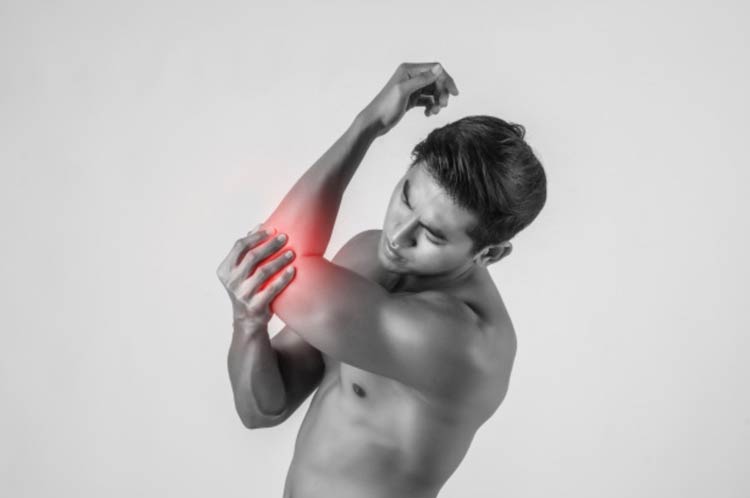
Elbow Pain
Pain is one of the most common reasons why people seek the help of a doctor. Pain can develop anywhere in the body from the back to the head and even the joints. Elbow pain can be incredibly debilitating. Many people do not realize just how much they use their elbows until they start to feel discomfort.When someone has pain in their elbow, they often have trouble reading, writing, eating, driving a car, and carrying out other everyday activities, let alone athletic ones. For this reason, it is important for individuals and their families to understand some of the basics behind elbow pain.
Elbow Pain Causes and Symptoms: If an individual feels discomfort in his or her elbow, there are a number of common causes that need to be considered. Some of these include:
Tennis Elbow: Tennis elbow is one of the most common causes of elbow pain. This is pain that develops on the outer side of the elbow. This comes from repetitive motions that mimic swinging a racket. Tennis and piano playing are common causes of tennis elbow.
Golfer’s Elbow: In some ways, the opposite of tennis elbow, golfer’s elbow is pain that develops on the inside of the elbow. Golfer’s elbow can be unpleasant and is made worse by actions that mimic swinging a golf club.
Tendinitis: Tendinitis is a chronic condition that will develop gradually over time. Tendinitis is inflammation of the muscles in and around the elbow right where they insert into the bone itself. This pain is generally made worse by movement.
Arthritis: Arthritis is inflammation of the joint space that causes the cartilage to break down. Without the cartilage to cushion the bony surfaces, the bones start to degrade. This causes pain. While the exact symptoms will vary from condition to condition, there are a few common symptoms that people might notice. These include:
• The development of pain that is generally made worse with movement
• Redness of the joint itself
• Elbow stiffness
• The joint space might start to swell
• An overall restricted range of motion
• Anyone who is noticing these symptoms should know that there are several treatment options available.
Elbow Pain Causes and Symptoms: If an individual feels discomfort in his or her elbow, there are a number of common causes that need to be considered. Some of these include:
Tennis Elbow: Tennis elbow is one of the most common causes of elbow pain. This is pain that develops on the outer side of the elbow. This comes from repetitive motions that mimic swinging a racket. Tennis and piano playing are common causes of tennis elbow.
Golfer’s Elbow: In some ways, the opposite of tennis elbow, golfer’s elbow is pain that develops on the inside of the elbow. Golfer’s elbow can be unpleasant and is made worse by actions that mimic swinging a golf club.
Tendinitis: Tendinitis is a chronic condition that will develop gradually over time. Tendinitis is inflammation of the muscles in and around the elbow right where they insert into the bone itself. This pain is generally made worse by movement.
Arthritis: Arthritis is inflammation of the joint space that causes the cartilage to break down. Without the cartilage to cushion the bony surfaces, the bones start to degrade. This causes pain. While the exact symptoms will vary from condition to condition, there are a few common symptoms that people might notice. These include:
• The development of pain that is generally made worse with movement
• Redness of the joint itself
• Elbow stiffness
• The joint space might start to swell
• An overall restricted range of motion
• Anyone who is noticing these symptoms should know that there are several treatment options available.
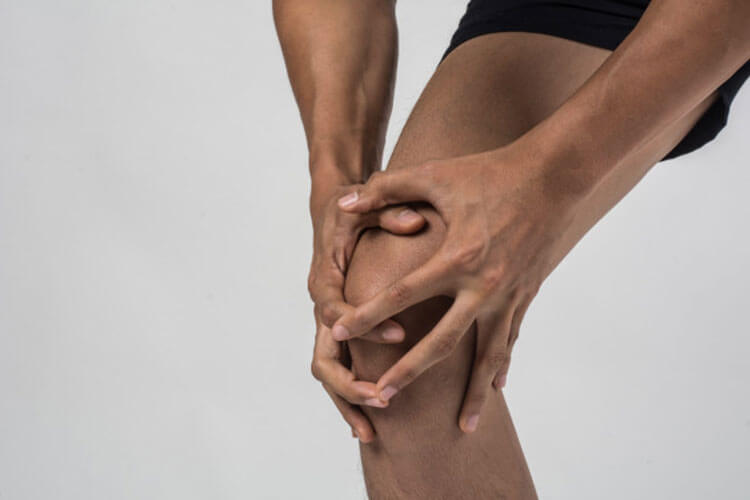
Knee Pain
If a person experiences knee pain, a chronic condition or injury is usually to blame and treatment should be administered accordingly. The knee has several components and moving parts which create a delicate balance of bones, tendons, muscles, cartilage, and ligaments.
The components of the knee must work together, and move in harmony. There are several causes for knee pain, but luckily, many non-invasive treatment options exist to restore pain-free mobility.
Common Causes for Knee Pain
There are many common causes for knee pain, generally speaking, knee pain either comes from an acute injury, or from a chronic condition. Several degenerative conditions, such as arthritis, can cause long term knee pain. Additionally, injuries like fractures, dislocations, or tears can also cause knee pain.Tears to the structural components within the knee are very diverse, with varying treatment options depending on the type of tear sustained.
Different Types of Tears
One of the most common reasons a person experiences knee pain is the result of an injury. Ligaments, cartilage, and tendons are particularly prone to tears from irregular movements or direct impact.
ACL – The Anterior Cruciate Ligament, often abbreviated to ACL, is the ligament that is commonly torn in sports accidents. The tear can come from quick changes in directions, or from landing incorrectly. It is very common to have an ACL tear accompany a secondary injury such as a torn meniscus, cartilage, or other ligament tears. This tear can leave the knee unstable if left untreated, which can potentially increase the likelihood of further injury.
PCL – Alternatively, the Posterior Cruciate Ligament, or PCL, is most commonly damaged in high impact injuries, such as a direct impact to the knee or an automobile accident. The ligament can become torn if the impact occurs while the knee is in the bent position. Unlike an ACL tear, this injury can often heal on its own with minimal medical intervention.
Meniscus – Within the knee is a pad of cartilage, called the meniscus, which works as a natural shock absorber in the body. The meniscus can become torn with a sudden motion that involves twisting, cutting, pivoting, or twisting. While this injury is very common in contact sports, such as football, it can also occur simply from an irregular movement. Many people can still bend, sit, and walk with a torn meniscus, however, if left untreated the tear can worsen over time.
Tendon – Inside the knee, there are two main tendons that can become overstretched and eventually torn. Both quadriceps and patellar tendon tears are common in middle-aged people. These injuries are commonly sports-related, especially in sports that involve running and jumping. Torn tendons can leave the knee incredibly unstable and can make the knee susceptible to future injury if left untreated.
Symptoms of Knee Pain
Knee pain symptoms are usually very evident and can hinder a patient’s mobility. If symptoms persist for longer than 48 hours it is always advisable to seek medical attention. Some common symptoms of knee pain include:
• Swelling or stiffness with an inability to bend or straighten the knee completely• Warm or tender to the touch• A new popping or crunching sound when the knee is bent or straightened
• Weakness or instability in a joint under sustained weightKnee Pain Treatment
If you are experiencing any of the symptoms associated with knee pain, it might be time to seek professional knee pain treatment. Working with a doctor, you will receive a full evaluation that may include various diagnostic tests such as a physical examination, X-Rays, or an MRI. The course of treatment recommended will depend on several factors including the severity of the injury or condition, your age and overall health, and your activity level.
Non-Invasive Knee Pain Relief
Luckily, several common knee injuries and conditions can be healed with non-invasive knee pain relief options. These techniques are both safe and effective which can alleviate symptoms and improve quality of life.
Chiropractic Care – People commonly associate chiropractic care with spine conditions, but truly chiropractic care focuses on overall wellbeing and balance. Often, knee injuries and conditions are caused by an imbalance in the body which can create undue stress on ligaments, muscles, joints, and tendons. By realigning the spine, the pressure is relieved, which can allow injuries to heal safely and naturally.
RICE – This acronym has withstood the test of time, and is a safe option when a patient first notices the signs of knee pain. RICE stands for rest, ice, (light) compression, and elevation. Combining these four elements can help alleviate knee pain symptoms.Any type of knee pain, whether it stems from an injury or degenerative condition, can be debilitating and can impact everyday life. Finding a solution to alleviate symptoms fast, efficiently, and safely is pivotal to enjoy a high quality of life. The team at Two Hands Chiropractic understands just how important pain-free mobility is and is here to help.
The components of the knee must work together, and move in harmony. There are several causes for knee pain, but luckily, many non-invasive treatment options exist to restore pain-free mobility.
Common Causes for Knee Pain
There are many common causes for knee pain, generally speaking, knee pain either comes from an acute injury, or from a chronic condition. Several degenerative conditions, such as arthritis, can cause long term knee pain. Additionally, injuries like fractures, dislocations, or tears can also cause knee pain.Tears to the structural components within the knee are very diverse, with varying treatment options depending on the type of tear sustained.
Different Types of Tears
One of the most common reasons a person experiences knee pain is the result of an injury. Ligaments, cartilage, and tendons are particularly prone to tears from irregular movements or direct impact.
ACL – The Anterior Cruciate Ligament, often abbreviated to ACL, is the ligament that is commonly torn in sports accidents. The tear can come from quick changes in directions, or from landing incorrectly. It is very common to have an ACL tear accompany a secondary injury such as a torn meniscus, cartilage, or other ligament tears. This tear can leave the knee unstable if left untreated, which can potentially increase the likelihood of further injury.
PCL – Alternatively, the Posterior Cruciate Ligament, or PCL, is most commonly damaged in high impact injuries, such as a direct impact to the knee or an automobile accident. The ligament can become torn if the impact occurs while the knee is in the bent position. Unlike an ACL tear, this injury can often heal on its own with minimal medical intervention.
Meniscus – Within the knee is a pad of cartilage, called the meniscus, which works as a natural shock absorber in the body. The meniscus can become torn with a sudden motion that involves twisting, cutting, pivoting, or twisting. While this injury is very common in contact sports, such as football, it can also occur simply from an irregular movement. Many people can still bend, sit, and walk with a torn meniscus, however, if left untreated the tear can worsen over time.
Tendon – Inside the knee, there are two main tendons that can become overstretched and eventually torn. Both quadriceps and patellar tendon tears are common in middle-aged people. These injuries are commonly sports-related, especially in sports that involve running and jumping. Torn tendons can leave the knee incredibly unstable and can make the knee susceptible to future injury if left untreated.
Symptoms of Knee Pain
Knee pain symptoms are usually very evident and can hinder a patient’s mobility. If symptoms persist for longer than 48 hours it is always advisable to seek medical attention. Some common symptoms of knee pain include:
• Swelling or stiffness with an inability to bend or straighten the knee completely• Warm or tender to the touch• A new popping or crunching sound when the knee is bent or straightened
• Weakness or instability in a joint under sustained weightKnee Pain Treatment
If you are experiencing any of the symptoms associated with knee pain, it might be time to seek professional knee pain treatment. Working with a doctor, you will receive a full evaluation that may include various diagnostic tests such as a physical examination, X-Rays, or an MRI. The course of treatment recommended will depend on several factors including the severity of the injury or condition, your age and overall health, and your activity level.
Non-Invasive Knee Pain Relief
Luckily, several common knee injuries and conditions can be healed with non-invasive knee pain relief options. These techniques are both safe and effective which can alleviate symptoms and improve quality of life.
Chiropractic Care – People commonly associate chiropractic care with spine conditions, but truly chiropractic care focuses on overall wellbeing and balance. Often, knee injuries and conditions are caused by an imbalance in the body which can create undue stress on ligaments, muscles, joints, and tendons. By realigning the spine, the pressure is relieved, which can allow injuries to heal safely and naturally.
RICE – This acronym has withstood the test of time, and is a safe option when a patient first notices the signs of knee pain. RICE stands for rest, ice, (light) compression, and elevation. Combining these four elements can help alleviate knee pain symptoms.Any type of knee pain, whether it stems from an injury or degenerative condition, can be debilitating and can impact everyday life. Finding a solution to alleviate symptoms fast, efficiently, and safely is pivotal to enjoy a high quality of life. The team at Two Hands Chiropractic understands just how important pain-free mobility is and is here to help.

Neck Pain
One of the most common reasons why patients come to see us is neck pain. Those who suffer from neck pain might be told they need to take a bunch of dangerous pain medications. They might even be asked to undergo a serious surgical procedure. Fortunately, there is another way to treat neck pain.
Why Do People Experience Neck Pain?
There are a few common reasons why people might experience neck pain. Some of the most common reasons include:
Poor Posture: This is one of the most common causes of neck pain. When someone has poor posture, the muscles and ligaments in the neck are stretched too far. This can pull the vertebrae out of alignment, leading to neck pain.
Auto Accidents: An auto accident can lead to something called whiplash. This happens when rapid changes in momentum lead to sprains of the upper cervical ligaments. Whiplash can lead to issues with flexibility and the neck’s range of motion.
Work Ergonomics: Finally, poor ergonomics at work can also lead to neck pain. Spending all day sitting at a desk can place a lot of stress on the neck. This can cause the muscles to get tight, leading to knots that cause discomfort.
How Do Chiropractors Treat Neck Pain?
When someone comes to a chiropractor for help with neck pain, there are a few treatment options that can be employed. These include:
Adjustments: Chiropractic adjustments are at the core of what we do. We know that people who experience neck pain often have spinal alignment issues. We can perform chiropractic adjustments to move the vertebrae back to the proper positions. This will relax the ligaments, tendons, and muscles, restoring someone’s flexibility and range of motion.
Corrective Exercises: We also want to prevent someone’s neck pain from returning. To do this, we will come up with a plan of corrective exercises. These exercises are done to strengthen areas of the neck that might be vulnerable to reinjury. By strengthening muscles, ligaments, tendons, and joints, the neck will be able to withstand the stress of the daily routine.
Benefits of Choosing a Chiropractor
When someone is looking for a neck pain doctor, it is a good idea to choose a chiropractor. A chiropractor will employ neck pain treatment options that will help someone recover with limited side effects.First, a chiropractor is a neck pain doctor who will stay away from prescription medications. Prescription medications for neck pain often include narcotics and opioids. These drugs can cause someone to feel sleepy, confused, and disoriented. Furthermore, an overdose of these medications can even be fatal. We seek to avoid prescription medications.Finally, our neck pain treatment plans will also help someone avoid surgery. Surgical procedures for neck pain can lead to serious complications. Sometimes, people even develop chronic pain after surgery. We will do everything in our power to help someone avoid the operating room.
Visit Your Neck Pain Doctor Today!
If you are in need of an experienced neck pain doctor who will place your needs first, then visit Two Hands Chiropractic today. We provide same-day appointments and free patient consultations. We will tailor our treatment plans to meet your individual needs. If you would like to learn more about our services and how we can help you.
Why Do People Experience Neck Pain?
There are a few common reasons why people might experience neck pain. Some of the most common reasons include:
Poor Posture: This is one of the most common causes of neck pain. When someone has poor posture, the muscles and ligaments in the neck are stretched too far. This can pull the vertebrae out of alignment, leading to neck pain.
Auto Accidents: An auto accident can lead to something called whiplash. This happens when rapid changes in momentum lead to sprains of the upper cervical ligaments. Whiplash can lead to issues with flexibility and the neck’s range of motion.
Work Ergonomics: Finally, poor ergonomics at work can also lead to neck pain. Spending all day sitting at a desk can place a lot of stress on the neck. This can cause the muscles to get tight, leading to knots that cause discomfort.
How Do Chiropractors Treat Neck Pain?
When someone comes to a chiropractor for help with neck pain, there are a few treatment options that can be employed. These include:
Adjustments: Chiropractic adjustments are at the core of what we do. We know that people who experience neck pain often have spinal alignment issues. We can perform chiropractic adjustments to move the vertebrae back to the proper positions. This will relax the ligaments, tendons, and muscles, restoring someone’s flexibility and range of motion.
Corrective Exercises: We also want to prevent someone’s neck pain from returning. To do this, we will come up with a plan of corrective exercises. These exercises are done to strengthen areas of the neck that might be vulnerable to reinjury. By strengthening muscles, ligaments, tendons, and joints, the neck will be able to withstand the stress of the daily routine.
Benefits of Choosing a Chiropractor
When someone is looking for a neck pain doctor, it is a good idea to choose a chiropractor. A chiropractor will employ neck pain treatment options that will help someone recover with limited side effects.First, a chiropractor is a neck pain doctor who will stay away from prescription medications. Prescription medications for neck pain often include narcotics and opioids. These drugs can cause someone to feel sleepy, confused, and disoriented. Furthermore, an overdose of these medications can even be fatal. We seek to avoid prescription medications.Finally, our neck pain treatment plans will also help someone avoid surgery. Surgical procedures for neck pain can lead to serious complications. Sometimes, people even develop chronic pain after surgery. We will do everything in our power to help someone avoid the operating room.
Visit Your Neck Pain Doctor Today!
If you are in need of an experienced neck pain doctor who will place your needs first, then visit Two Hands Chiropractic today. We provide same-day appointments and free patient consultations. We will tailor our treatment plans to meet your individual needs. If you would like to learn more about our services and how we can help you.

Scoliosis
The human spine naturally follows a long, gentle, front-to-back S-curve. Occasionally, however, it may also display an unnatural side-to-side curvature. This abnormal curvature is called scoliosis.
Scoliosis can occur for numerous reasons. Many sufferers are simply born with it, either due to a genetic issue or as part of some larger congenital syndrome. Spinal injuries, infections, or degeneration can cause scoliosis to appear later in life. Other cases have no identifiable cause. If you seek scoliosis treatment in Austin TX, it’s probably because you’ve noticed some telltale symptoms of the disorder. While most cases of scoliosis are relatively mild, you may notice irregularities in your posture and musculoskeletal symmetry. For example, one hip or shoulder may sit higher than the other, your arms may appear uneven in length, or one shoulder blade or set of ribs may stick out prominently. Untreated scoliosis may grow more severe. If this happens, you may experience chronic back pain, increasing deformity, and heart or lung damage.
Types of Scoliosis: Scoliosis may take different forms depending on its location in the spinal column, the direction of the curvature, and the effects it may produce. The following four conditions represent the most common configurations.
Thoracic scoliosis: Thoracic scoliosis affects the thoracic region of the spinal column. The thoracic spine consists of the vertebrae from the collarbone through the rib cage. This condition, which may affect rib cage development, typically makes one shoulder appear higher than the other.Thoracolumbar scoliosis: In thoracolumbar scoliosis, the abnormal curvature occurs in an area overlapping the lower thoracic spine (at the base of the rib cage) and the upper lumbar spine immediately beneath it. This condition, which mainly develops in females, usually features a curve toward the right-hand side of the body.Lumbar scoliosis: A curvature in the lower part of the spinal column that doesn’t involve any part of the thoracic spine is called lumbar scoliosis. This type of scoliosis can alter the apparent hip alignment. It can be present from birth, or it can develop alongside age-related joint degeneration.
Double curve scoliosis: Double curve scoliosis involves two different abnormal curves, one higher up the spinal column and the other lower down, with each portion of the spine curving in a different direction. It is also called S-shaped scoliosis.
Scoliosis can occur for numerous reasons. Many sufferers are simply born with it, either due to a genetic issue or as part of some larger congenital syndrome. Spinal injuries, infections, or degeneration can cause scoliosis to appear later in life. Other cases have no identifiable cause. If you seek scoliosis treatment in Austin TX, it’s probably because you’ve noticed some telltale symptoms of the disorder. While most cases of scoliosis are relatively mild, you may notice irregularities in your posture and musculoskeletal symmetry. For example, one hip or shoulder may sit higher than the other, your arms may appear uneven in length, or one shoulder blade or set of ribs may stick out prominently. Untreated scoliosis may grow more severe. If this happens, you may experience chronic back pain, increasing deformity, and heart or lung damage.
Types of Scoliosis: Scoliosis may take different forms depending on its location in the spinal column, the direction of the curvature, and the effects it may produce. The following four conditions represent the most common configurations.
Thoracic scoliosis: Thoracic scoliosis affects the thoracic region of the spinal column. The thoracic spine consists of the vertebrae from the collarbone through the rib cage. This condition, which may affect rib cage development, typically makes one shoulder appear higher than the other.Thoracolumbar scoliosis: In thoracolumbar scoliosis, the abnormal curvature occurs in an area overlapping the lower thoracic spine (at the base of the rib cage) and the upper lumbar spine immediately beneath it. This condition, which mainly develops in females, usually features a curve toward the right-hand side of the body.Lumbar scoliosis: A curvature in the lower part of the spinal column that doesn’t involve any part of the thoracic spine is called lumbar scoliosis. This type of scoliosis can alter the apparent hip alignment. It can be present from birth, or it can develop alongside age-related joint degeneration.
Double curve scoliosis: Double curve scoliosis involves two different abnormal curves, one higher up the spinal column and the other lower down, with each portion of the spine curving in a different direction. It is also called S-shaped scoliosis.
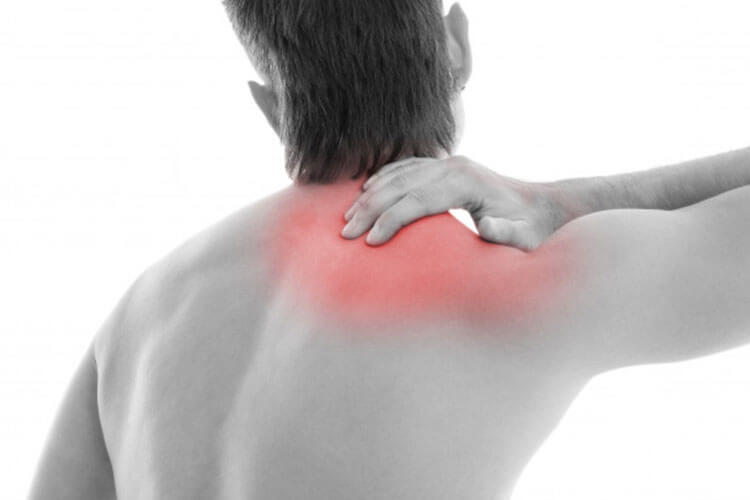
Shoulder Pain
The shoulder is one of those incredibly versatile and hard-working joints that you don’t normally pay much attention to — until something goes wrong with it.
Once you develop chronic pain or a disabling injury in one or both shoulders, however, you suddenly realize just how limited your quality of life has become.
Even so, you may not get the relief you need from simple painkillers, while the prospect of shoulder surgery seems awfully extreme to you (and rightly so). If you’d rather pursue drug-free, non-invasive shoulder pain treatment in Austin TX, Two Hands Chiropractic can help you achieve that elusive relief and help you optimize your shoulder function.
Once you develop chronic pain or a disabling injury in one or both shoulders, however, you suddenly realize just how limited your quality of life has become.
Even so, you may not get the relief you need from simple painkillers, while the prospect of shoulder surgery seems awfully extreme to you (and rightly so). If you’d rather pursue drug-free, non-invasive shoulder pain treatment in Austin TX, Two Hands Chiropractic can help you achieve that elusive relief and help you optimize your shoulder function.

Shoulder Pain Causes and Symptoms
The human shoulder joint features a ball-and-socket arrangement that allows you to raise, lower, and rotate your arm in a variety of directions. But there’s more to this complex joint than the ways the arm bone, shoulder blade, and collarbone come together. Making your shoulder move requires a set of four muscles known as the rotator cuff.
These muscles are attached to the shoulder bones by tendons, which are cushioned by anti-friction sacs called bursae. The bone ends are lined with cartilage to keep them from rubbing together. As you might suspect, these many parts offer many opportunities for damage or dysfunction to occur — with shoulder pain as the result. Common causes include:
Sports injuries – A violent tackle or other sports impact can dislocate the arm bone from the shoulder socket, which causes sudden, agonizing pain. Tearing of the rotator cuff muscles or tendons can also make even the slightest shoulder motion unthinkable. Many athletes also develop chronic inflammation of the shoulder muscles, bursae, or tendons due to repetitive motions such as countless tennis serves, golf swings or baseball pitches.
Overuse injuries – Sports activities aren’t the only path to chronic shoulder pain. Work activities, musical instrument playing, painting, or any other activities that overwork the shoulder can cause chronic tendonitis, muscle strain, and other kinds of inflammatory pain.
These muscles are attached to the shoulder bones by tendons, which are cushioned by anti-friction sacs called bursae. The bone ends are lined with cartilage to keep them from rubbing together. As you might suspect, these many parts offer many opportunities for damage or dysfunction to occur — with shoulder pain as the result. Common causes include:
Sports injuries – A violent tackle or other sports impact can dislocate the arm bone from the shoulder socket, which causes sudden, agonizing pain. Tearing of the rotator cuff muscles or tendons can also make even the slightest shoulder motion unthinkable. Many athletes also develop chronic inflammation of the shoulder muscles, bursae, or tendons due to repetitive motions such as countless tennis serves, golf swings or baseball pitches.
Overuse injuries – Sports activities aren’t the only path to chronic shoulder pain. Work activities, musical instrument playing, painting, or any other activities that overwork the shoulder can cause chronic tendonitis, muscle strain, and other kinds of inflammatory pain.

Chiropractic Care for Conservative Shoulder Pain Treatment
Chiropractic care makes a natural first line of treatment for shoulder pain. Our chiropractor can examine your shoulder via X-rays and other techniques to observe problems ranging from osteoarthritis or mild joint alignment errors to an acute dislocation.
We can also check your neck to see whether you’re actually experiencing referred cervical nerve pain. We can then provide safe, conservative shoulder pain treatment by making the necessary chiropractic adjustments to normalize joint position and relieve pinched nerve tissue. Talk to Our Shoulder Pain Doctor in Austin, Two Hands Chiropractic is your choice for shoulder pain treatment if you want to feel better and/or heal faster without surgery or medication.
We can also check your neck to see whether you’re actually experiencing referred cervical nerve pain. We can then provide safe, conservative shoulder pain treatment by making the necessary chiropractic adjustments to normalize joint position and relieve pinched nerve tissue. Talk to Our Shoulder Pain Doctor in Austin, Two Hands Chiropractic is your choice for shoulder pain treatment if you want to feel better and/or heal faster without surgery or medication.

Whiplash
If you have been involved in a car accident recently, then you need to make sure that you seek medical care. When it comes to car accident treatment, such as whiplash, many people go to the emergency room first.
On the other hand, the emergency room is only going to get someone stable. In order for someone to complete the recovery process, it is critical to follow up with a trained chiropractor.
Particularly for those who have been diagnosed with a whiplash injury, it is critical to developing a comprehensive treatment plan to prevent long-term complications.
An Introduction to Whiplash InjuryWhen someone is involved in a motor vehicle accident, rapid changes in momentum can cause the neck to snap rapidly from side to side. As a result, this causes a shock to the ligaments, tendons, and muscles in the neck.Even though this injury commonly takes place in a car accident, particularly when someone has been rear-ended, this injury can also take place following traumatic injuries, sports accidents, and a variety of other situations.Whiplash can be referred to as a neck sprain or a neck strain; however, it is commonly referred to as a cervical ligament sprain. This is a serious neck injury that can lead to complications if it is not treated appropriately.
What Are the Most Common Symptoms of Whiplash Injury?There are a few common symptoms of a whiplash injury. These include:
Symptoms of Whiplash Injury
• Pain and stiffness located in the neck
• Chronic fatigue due to issues falling asleep or staying asleep at night
• A feeling of dizziness, particularly when someone stands up too quickly
• A markedly reduced range of motion in the neck
• Headaches that usually start at the base of the skull and spread elsewhere
• A tenderness that is located in the arms, upper back, and shoulders
• A feeling of numbness or tingling in the arms
Some people who suffer a whiplash injury may only develop one or two of the symptoms above. Other people might experience all of them. Regardless, whiplash is an injury that must be taken seriously.
Why Can Whiplash be Serious?
Even though most people who suffer whiplash will make a full recovery, whiplash is serious because it can take a long time to recover fully. Furthermore, individuals who do not seek appropriate medical care can develop more severe headaches, more severe dizziness, and could have trouble carrying out their daily activities.In some situations, people who suffer whiplash might have trouble returning to work quickly. This could make it hard for people to make ends meet, making it difficult to put food on the table. Finally, individuals who suffer a whiplash injury might also develop mental health conditions as a result of the stress created by the injury. Therefore, it is critical to approach whiplash in a comprehensive manner.
Whiplash Treatment in Austin, TexasWhen it comes to whiplash treatment in Austin, many people believe they need to take prescription medication. Fortunately, this is not always the case. A trained chiropractor can provide an alternative treatment option to whiplash. Using chiropractic care, it is possible to correct the alignment issues in the neck and back that take place following whiplash.When the vertebrae in the back are properly aligned, the tendons, muscles, and nerves in the neck and back calm down. In this manner, a trained chiropractor can help someone expedite the recovery process following whiplash. Furthermore, because the root cause of whiplash is addressed, people not only get better but stay better as well.
Why Should You See a Chiropractor for Whiplash Treatment in Austin?If you are looking for whiplash treatment in Austin, then look no further than Two Hands Chiropractic.
On the other hand, the emergency room is only going to get someone stable. In order for someone to complete the recovery process, it is critical to follow up with a trained chiropractor.
Particularly for those who have been diagnosed with a whiplash injury, it is critical to developing a comprehensive treatment plan to prevent long-term complications.
An Introduction to Whiplash InjuryWhen someone is involved in a motor vehicle accident, rapid changes in momentum can cause the neck to snap rapidly from side to side. As a result, this causes a shock to the ligaments, tendons, and muscles in the neck.Even though this injury commonly takes place in a car accident, particularly when someone has been rear-ended, this injury can also take place following traumatic injuries, sports accidents, and a variety of other situations.Whiplash can be referred to as a neck sprain or a neck strain; however, it is commonly referred to as a cervical ligament sprain. This is a serious neck injury that can lead to complications if it is not treated appropriately.
What Are the Most Common Symptoms of Whiplash Injury?There are a few common symptoms of a whiplash injury. These include:
Symptoms of Whiplash Injury
• Pain and stiffness located in the neck
• Chronic fatigue due to issues falling asleep or staying asleep at night
• A feeling of dizziness, particularly when someone stands up too quickly
• A markedly reduced range of motion in the neck
• Headaches that usually start at the base of the skull and spread elsewhere
• A tenderness that is located in the arms, upper back, and shoulders
• A feeling of numbness or tingling in the arms
Some people who suffer a whiplash injury may only develop one or two of the symptoms above. Other people might experience all of them. Regardless, whiplash is an injury that must be taken seriously.
Why Can Whiplash be Serious?
Even though most people who suffer whiplash will make a full recovery, whiplash is serious because it can take a long time to recover fully. Furthermore, individuals who do not seek appropriate medical care can develop more severe headaches, more severe dizziness, and could have trouble carrying out their daily activities.In some situations, people who suffer whiplash might have trouble returning to work quickly. This could make it hard for people to make ends meet, making it difficult to put food on the table. Finally, individuals who suffer a whiplash injury might also develop mental health conditions as a result of the stress created by the injury. Therefore, it is critical to approach whiplash in a comprehensive manner.
Whiplash Treatment in Austin, TexasWhen it comes to whiplash treatment in Austin, many people believe they need to take prescription medication. Fortunately, this is not always the case. A trained chiropractor can provide an alternative treatment option to whiplash. Using chiropractic care, it is possible to correct the alignment issues in the neck and back that take place following whiplash.When the vertebrae in the back are properly aligned, the tendons, muscles, and nerves in the neck and back calm down. In this manner, a trained chiropractor can help someone expedite the recovery process following whiplash. Furthermore, because the root cause of whiplash is addressed, people not only get better but stay better as well.
Why Should You See a Chiropractor for Whiplash Treatment in Austin?If you are looking for whiplash treatment in Austin, then look no further than Two Hands Chiropractic.

Wrist Pain
At Two Hands Chiropractic, there are numerous reasons why individuals and families in the local Austin and Houston areas have come to rely on us for their healthcare needs.One of the most common reasons why people call us to make an appointment has to do with pain. Pain can show up anywhere throughout the body.Some of the most common locations in which we treat pain include the head, back, neck, knees, and wrists. If someone has wrist pain, this can make it hard to type, eat, read, and write. For this reason, our wrist pain doctor provides a number of treatment options, including chiropractic care, to those in need.
Common Causes and Symptoms of Wrist Pain
If someone is experiencing pain in the wrist, there are a number of possible causes. Some of the most common reasons why we see wrist pain at Two Hands Chiropractic include:
Carpal Tunnel Syndrome:
Without a doubt, this is one of the most common causes of wrist pain. The carpal tunnel is a small area in the wrist that is bordered by a layer of fascia. Sometimes, this layer of fascia can become inflamed. This often develops due to overuse of the wrist, such as in typing for hours on end. When this happens, the median nerve that passes through the carpal tunnel can get compressed. This leads to shooting pains that travel down the wrist into the hand. It can also lead to numbness and tingling.
Arthritis:
Arthritis is another common cause of wrist pain. Arthritis is a chronic inflammatory condition that leads to the degradation of cartilage that usually cushions the bones of the hand and wrist. When this happens, the bones start to rub up against each other. The end result is wrist pain that might make it hard to move the hand and wrist from side to side.
Cubital Tunnel Syndrome:
Finally, this condition is similar to carpal tunnel syndrome. Cubital tunnel syndrome develops when the cubital tunnel in the wrist becomes inflamed, compressing the ulnar nerve. This condition often develops in sports such as tennis, golf, and baseball. The symptoms of cubital tunnel syndrome are similar to those of carpal tunnel; however, they tend to show up on the back of the hand instead of the palmar side.These are only a few of the many reasons why someone might have wrist pain. Fortunately, there are a number of possible wrist pain treatment options a chiropractor can provide.
Wrist Pain Relief & Treatment
A chiropractor can provide a number of treatment and wrist pain relief options. A chiropractor can take a look at the alignment of someone’s wrist, hand, shoulder, and spine. Then, if any of these joints are out of alignment, a chiropractor can make adjustments to improve someone’s alignment. This can help someone recover. In addition, there are a number of other non-surgical and drug-free treatment options available near you.
Common Causes and Symptoms of Wrist Pain
If someone is experiencing pain in the wrist, there are a number of possible causes. Some of the most common reasons why we see wrist pain at Two Hands Chiropractic include:
Carpal Tunnel Syndrome:
Without a doubt, this is one of the most common causes of wrist pain. The carpal tunnel is a small area in the wrist that is bordered by a layer of fascia. Sometimes, this layer of fascia can become inflamed. This often develops due to overuse of the wrist, such as in typing for hours on end. When this happens, the median nerve that passes through the carpal tunnel can get compressed. This leads to shooting pains that travel down the wrist into the hand. It can also lead to numbness and tingling.
Arthritis:
Arthritis is another common cause of wrist pain. Arthritis is a chronic inflammatory condition that leads to the degradation of cartilage that usually cushions the bones of the hand and wrist. When this happens, the bones start to rub up against each other. The end result is wrist pain that might make it hard to move the hand and wrist from side to side.
Cubital Tunnel Syndrome:
Finally, this condition is similar to carpal tunnel syndrome. Cubital tunnel syndrome develops when the cubital tunnel in the wrist becomes inflamed, compressing the ulnar nerve. This condition often develops in sports such as tennis, golf, and baseball. The symptoms of cubital tunnel syndrome are similar to those of carpal tunnel; however, they tend to show up on the back of the hand instead of the palmar side.These are only a few of the many reasons why someone might have wrist pain. Fortunately, there are a number of possible wrist pain treatment options a chiropractor can provide.
Wrist Pain Relief & Treatment
A chiropractor can provide a number of treatment and wrist pain relief options. A chiropractor can take a look at the alignment of someone’s wrist, hand, shoulder, and spine. Then, if any of these joints are out of alignment, a chiropractor can make adjustments to improve someone’s alignment. This can help someone recover. In addition, there are a number of other non-surgical and drug-free treatment options available near you.
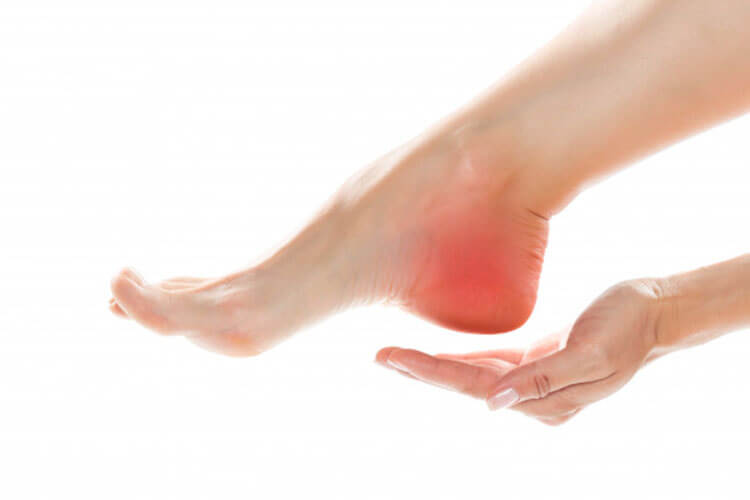
Foot Pain
Common Conditions Causing Foot Pain
While everybody experiences occasional foot pain for various reasons, foot pain treatment is recommended if pain is due to an injury, accompanied by a fever or if severe pain develops suddenly for no reason. People with diseases that impair their circulatory system (diabetes, for example) should call their foot pain doctor in Austin as soon as possible if one or both feet become painful.
Achilles Tendonitis
Your calf muscles are attached to heel bones by the Achilles tendon, a tough strip of tissue that helps control foot and ankle movement. When overused and strained, inflammation of the tendon can cause pain when you apply pressure on the bottom of the affected foot. Achilles tendonitis is usually treatable with RICE (rest, ice, compression, and elevation) but if pain persists for more than two days, seek foot pain treatment in Austin.
Plantar Fasciitis
Inflammation of the plantar fascia ligament extending across the heel bone may be diagnosed as plantar fasciitis. Symptoms of plantar fasciitis include heel pain, difficulty walking because of severe heel pain, and worsening pain after stepping on the foot. Risk factors for plantar fasciitis include standing for hours on hard floors, being overweight, having high arches or, alternately, flat feet, and walking improperly of motion.
Tarsal Tunnel Syndrome
Arthritis or injury are the most common reasons for suffering tarsal tunnel syndrome, an inflammation of the tibial nerve stretching through a narrow canal within the ankle bone and ligaments extending over the foot. Signs of tarsal tunnel syndrome are tingling and numbness in the foot’s middle and heel and shooting pains in these areas.
Foot Osteoarthritis
Arthritis generally affects three areas of the foot: the shinbone-ankle joint, joints involving the outer mid-foot, inner mid-foot, and heel bone, and the joint connecting the foot bone to the big toe.
Foot Sprain
When you injure ligaments or other soft tissues that connect several joint bones and experience pain, swelling, and warmth, you may have a foot sprain. Reasons for foot sprains include jumping up and down, pivoting suddenly while running or slipping/stumbling while walking. A foot pain doctor classifies foot sprains as minor (tiny ligament tears), moderate (larger ligament tears), or severe (complete detachment of ligaments from bone).
Foot Gout
Although gout typically affects finger joints, it can also affect foot and toe joints. Gout happens when you have excess uric acid in your bloodstream. Uric acid forms sharp, crystalline structures in joints that cause severe swelling and pain. Gout needs to be treated as soon as possible to avoid becoming a chronic condition that could damage joints.
Corrective Exercises to Accelerate Healing and Reduce Pain
Sprains and plantar fasciitis respond well to special exercises your doctor can show you how to do. Foot exercises will also strengthen weakened muscles and ligaments and help reduce your risk for repetitive injuries.
Health and Wellness Program
Foot pain treatment for gout primarily involves making dietary changes to decrease uric acid in the blood. Dr. Gravely will inform you of what you should be eating and not eating and suggest making other lifestyle changes to reduce or eliminate attacks of gout.
Chiropractic Techniques
Several chiropractic techniques such as active release therapy (ART) work well to address plantar fasciitis pain and other conditions that interfere with walking and running. ART is a type of massage therapy that stretches and extends soft tissues for the purpose of breaking up scar tissue.
While everybody experiences occasional foot pain for various reasons, foot pain treatment is recommended if pain is due to an injury, accompanied by a fever or if severe pain develops suddenly for no reason. People with diseases that impair their circulatory system (diabetes, for example) should call their foot pain doctor in Austin as soon as possible if one or both feet become painful.
Achilles Tendonitis
Your calf muscles are attached to heel bones by the Achilles tendon, a tough strip of tissue that helps control foot and ankle movement. When overused and strained, inflammation of the tendon can cause pain when you apply pressure on the bottom of the affected foot. Achilles tendonitis is usually treatable with RICE (rest, ice, compression, and elevation) but if pain persists for more than two days, seek foot pain treatment in Austin.
Plantar Fasciitis
Inflammation of the plantar fascia ligament extending across the heel bone may be diagnosed as plantar fasciitis. Symptoms of plantar fasciitis include heel pain, difficulty walking because of severe heel pain, and worsening pain after stepping on the foot. Risk factors for plantar fasciitis include standing for hours on hard floors, being overweight, having high arches or, alternately, flat feet, and walking improperly of motion.
Tarsal Tunnel Syndrome
Arthritis or injury are the most common reasons for suffering tarsal tunnel syndrome, an inflammation of the tibial nerve stretching through a narrow canal within the ankle bone and ligaments extending over the foot. Signs of tarsal tunnel syndrome are tingling and numbness in the foot’s middle and heel and shooting pains in these areas.
Foot Osteoarthritis
Arthritis generally affects three areas of the foot: the shinbone-ankle joint, joints involving the outer mid-foot, inner mid-foot, and heel bone, and the joint connecting the foot bone to the big toe.
Foot Sprain
When you injure ligaments or other soft tissues that connect several joint bones and experience pain, swelling, and warmth, you may have a foot sprain. Reasons for foot sprains include jumping up and down, pivoting suddenly while running or slipping/stumbling while walking. A foot pain doctor classifies foot sprains as minor (tiny ligament tears), moderate (larger ligament tears), or severe (complete detachment of ligaments from bone).
Foot Gout
Although gout typically affects finger joints, it can also affect foot and toe joints. Gout happens when you have excess uric acid in your bloodstream. Uric acid forms sharp, crystalline structures in joints that cause severe swelling and pain. Gout needs to be treated as soon as possible to avoid becoming a chronic condition that could damage joints.
Foot Pain Treatment Options
Two Hands Chiropractic in Austin offers several effective treatment therapies to resolve conditions causing foot pain. Your foot pain doctor may recommend one or more of the following:Corrective Exercises to Accelerate Healing and Reduce Pain
Sprains and plantar fasciitis respond well to special exercises your doctor can show you how to do. Foot exercises will also strengthen weakened muscles and ligaments and help reduce your risk for repetitive injuries.
Health and Wellness Program
Foot pain treatment for gout primarily involves making dietary changes to decrease uric acid in the blood. Dr. Gravely will inform you of what you should be eating and not eating and suggest making other lifestyle changes to reduce or eliminate attacks of gout.
Chiropractic Techniques
Several chiropractic techniques such as active release therapy (ART) work well to address plantar fasciitis pain and other conditions that interfere with walking and running. ART is a type of massage therapy that stretches and extends soft tissues for the purpose of breaking up scar tissue.

Ankle Pain
One of the most common reasons why people seek the care of a medical professional is pain or discomfort. Pain can show up in almost any location throughout the body and it is important for everyone to know that medical care is available. One of the most common locations that people can develop pain is in the ankle.
Ankle pain can be caused by a variety of medical problems and can present in a variety of ways. If you are looking for ankle pain treatment in Austin or the surrounding communities, Dr. Gravely and his team are here to help.
If someone is suffering from ankle pain, there are a few common causes of this discomfort. Some of the most common causes include:
Ankle Sprain: This is one of the most common reasons why someone has ankle pain. An ankle sprain can happen when someone takes an awkward step going down the stairs, steps in a hole in the ground, or lands awkwardly on their foot while playing sports. An ankle sprain can lead to ligament damage that manifests as pain.
Arthritis: Arthritis is another common cause of ankle pain. In arthritis, inflammation causes the cartilage in the ankle to degrade. As a result, the bones start rubbing together and inflammation develops. Over time, the inflammation gets worse, as does the pain.
Ankle pain can present with numerous symptoms. These may include discomfort, redness, swelling, and a loss of mobility. This can make it hard for someone to walk from place to place, inhibiting their daily routine. Fortunately, there are treatment options available.
Ankle pain can be caused by a variety of medical problems and can present in a variety of ways. If you are looking for ankle pain treatment in Austin or the surrounding communities, Dr. Gravely and his team are here to help.
If someone is suffering from ankle pain, there are a few common causes of this discomfort. Some of the most common causes include:
Ankle Sprain: This is one of the most common reasons why someone has ankle pain. An ankle sprain can happen when someone takes an awkward step going down the stairs, steps in a hole in the ground, or lands awkwardly on their foot while playing sports. An ankle sprain can lead to ligament damage that manifests as pain.
Arthritis: Arthritis is another common cause of ankle pain. In arthritis, inflammation causes the cartilage in the ankle to degrade. As a result, the bones start rubbing together and inflammation develops. Over time, the inflammation gets worse, as does the pain.
Ankle pain can present with numerous symptoms. These may include discomfort, redness, swelling, and a loss of mobility. This can make it hard for someone to walk from place to place, inhibiting their daily routine. Fortunately, there are treatment options available.

So Much More…
Chiropractic Care Can Help With So Much MoreChiropractic Care Can Help With So Much More
✓ Allergies / Sinus Issues
✓ High Blood Pressure
✓ Fibromyalgia
✓ And More…